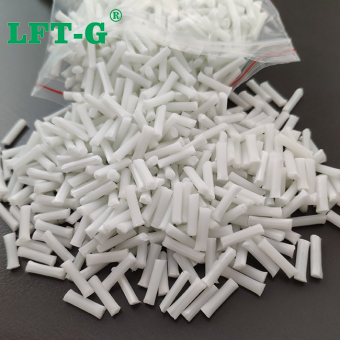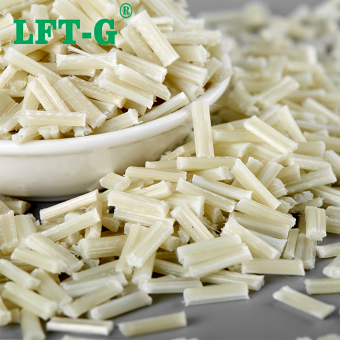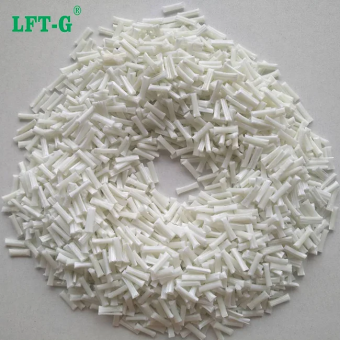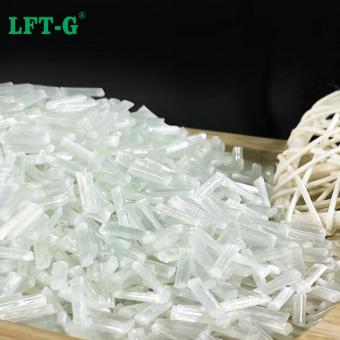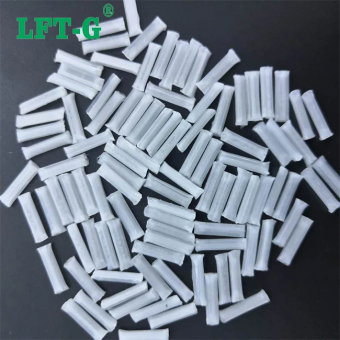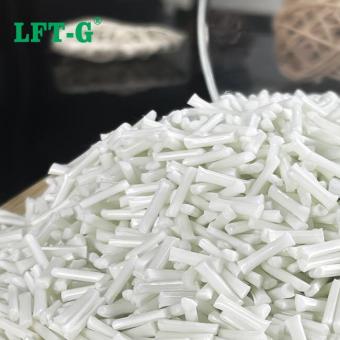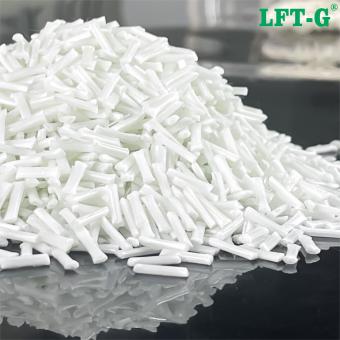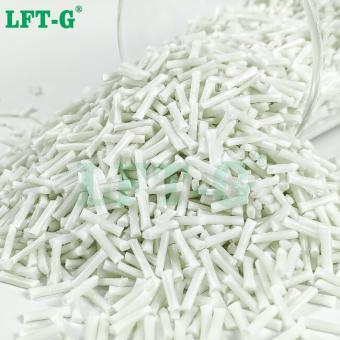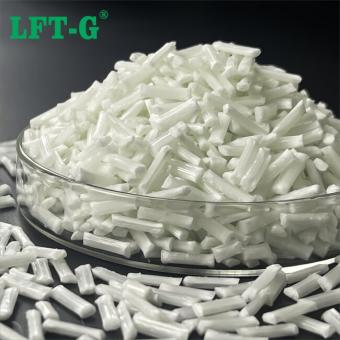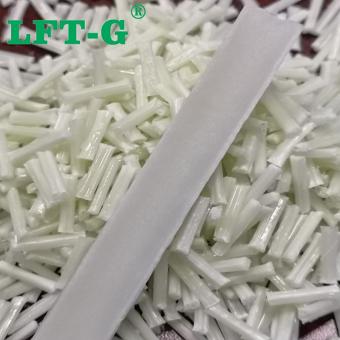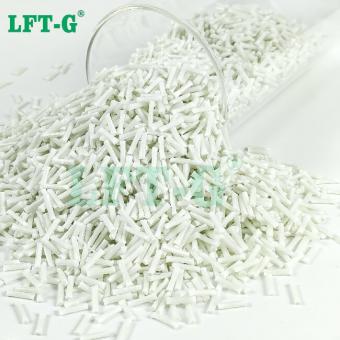Long glass fiber has high strength, high rigidity, corrosion resistance, harsh environment suitability and low cost. When the resin matrix is impregnated and extruded into pellets ,Also called Long Glass Fiber Polymer it has good mechanical properties.
-
LFT-G modified ABS compounds Long Glass Fiber for automotive partsABS injection molding refers to the process of injecting molten ABS plastic into a mold at high pressures and temperatures. There are many ABS injection molding applications as it is a widely used plastic and can be found in the automotive, consumer product, and construction industries to name a few.
- ABS Long Glass Fiber Reinforced Polymer
- ABS long fiber reinforced
- lgf injection mold abs for engineering
- China manufacturer ABS GF fiber reinforced
- High-performance engineering plastic ABS composite
- Natural color abs materials with filler
Tags :
-
Xiamen LFT PPA Polyphthalamide filled Long Glass Fiber reinforced plastic resinPPA (Polyphthalamide) is polyphthalamide.PPA is a kind of thermoplastic functional nylon with both semi-crystalline structure and non-crystalline structure. It is prepared by polycondensation of phthalic acid and phthalenediamine. It has excellent thermal, electrical, physical and chemical resistance and other comprehensive properties.
- PPA long fiber compounds manufacturer
- ppa granules natural polymer producer
- PPA producer LGF glass fiber
- China wholesale PPA resin pellet filler
- Thermoplastic materials PPA maker
- Injection molding PPA GF
Tags :
-
PPS Polyphenylene Sulfide Long Glass Fiber Reinforced CompoundsPPS is a high-performance, tough engineering plastic with great dimensional and thermal stability, as well as a wide operating temperature range of up to 260 °C and good chemical resistance. Moreover, PPS, like most other thermoplastics, is an electrical insulator. Its ability to be used at high temperatures coupled with its thermal stability makes PPS great for applications such as semiconductor components in machinery, bearings, and valve seats.
- PPS for Lightweight Automotive Parts
- Industrial PPS Composite Materials
- PPS for Injection Molding
- High-Performance PPS Composites
- Long Fiber Reinforced PPS
- china manufacturer PPS good price warehouse
Tags :
-
ABS Acrylonitrile Butadiene Styrene Long Glass Fiber Reinforced CompoundsABS is another preferred type of engineering plastic that is valued for its chemical and thermal stability, strength, toughness, and glossy finish. Its host of desirable properties make it a versatile material. It is used in everything from consumer products like toys and bicycle helmets to automotive applications such as interior trim pieces, housings for electronics, and more.
- ABS for Lightweight Automotive Parts
- Industrial ABS Composite Materials
- ABS for Injection Molding
- High-Performance ABS Composites
- Long Fiber Reinforced ABS
- china manufacturer ABS good price warehouse
Tags :
-
TPU Thermoplastic Urethane Long Glass Fiber Reinforced CompoundsETPU is a tough, highly abrasion-resistant resin that bridges the gap between rubbers and plastics. TPUs can be formulated to be rigid or elastomeric. TPU exhibits a high flex before break and is ideal for wheels and door panels.
- TPU for Lightweight Automotive Parts
- Industrial TPU Composite Materials
- TPU for Injection Molding
- High-Performance TPU Composites
- Long Fiber Reinforced TPU
- china manufacturer TPU good price warehouse
Tags :
-
LFT Nylon Polyamide 12 Long Glass Fiber Reinforced CompoundsPA 12 (also known as Nylon 12) is a good general-use plastic with broad additive applications and is known for its toughness, tensile strength, impact strength and ability to flex without fracture. PA 12 has long been used by injection molders due to these mechanical properties. If you’re considering converting metal parts to plastic, PA12 will be a good choice.
- PA12 1,2 PA filler GFRP 40 30 20
- pa12-gf30 polymaker application
- Thermoplastic resin made in China
- Nylon filament polymer resin pellets
- EDM wholesale on stock PA12 materials
- Best price PA12 for engineering
Tags :
-
Nylon Polyamide 66 Long Glass Fiber Reinforced CompoundsThe mechanical properties of long glass fiber reinforced nylon 66 (LGFR-PA66) are obviously better than those of short glass fiber reinforced nylon 66 (SGFR-PA66), and the molding processing performance is also better. It can be molded by various molding methods such as injection molding and compression molding, and complex components can also be formed.
- PA66 PA filler GFRP 40 30
- pa66-gf30 polymaker application
- pA66 fiberglass filament
- EDM wholesell on stock PA 66 materials
- Best price PA66 high strength
Tags :
-
Nylon Polyamide 6 With Filler Long Glass Fiber Reinforced CompoundsGlass-filled Nylon, or PA6-GF, employs PA6 (polyamide 6) as the basic compounds. Polycaprolactam (PA6) is another name for Nylon 6 or PA6. PA6-GF performs well at low temperatures and has strong toughness and impact resistance. It also has high dimensional stability and moisture absorption. Glass fiber content in PA6 GF range from 20% to 60%. Strength and rigidity increase with increasing glass fiber content, while toughness and impact resistance decrease.
- PA6 PA filler GFRP 40 30
- pa6-gf30 polymaker application
- pA6 glass fiber filament
- EDM wholesell on stock PA6 materials
- Best price PA6 high strength
Tags :
-
Homopolymer Polypropylene With Filler Long Glass Fiber Reinforced for InjectionHomopolymer long glass fiber reinforced polypropylene (PP) offers excellent mechanical properties, including high strength, impact resistance, and dimensional stability. With a glass fiber content ranging from 20% to 60%, it is ideal for applications in automotive, industrial machinery, and power tools, providing a lightweight yet durable alternative to traditional metals.
- homo PP home appliance use
- Polypropylene resin manufacture factory
- pp glass fiber roving injection molding use
- Customized PP Materials
- Best priice PP high toughness lightweight
Tags :
-
Copolymer Polypropylene With Filler Long Glass Fiber Reinforced for InjectionPP long glass fiber reinforced composites offer excellent mechanical properties, including high tensile strength, impact resistance, and dimensional stability, making them ideal for demanding applications. These materials are widely used in the automotive, home appliance, and industrial sectors, where durability and performance are critical. With glass fiber content ranging from 20% to 60%, they provide a balance between strength and weight reduction, enhancing the overall efficiency of the final product.
- PP polymer GF composites
- Polypropylene resin China manufacture
- pp glass fiber filament
- EDM wholesell on stock PP materials
- Best priice PP high strength
Tags :
-
Xiamen LFT-G High toughness MXD6 composite filling long glass fiber original colorNylon - MXD6 is a kind of crystalline polyamide resin, which is synthesized by the condensation of m-benzoylamine and adipic acid.
- Crystalline nylon resin mxd6 gf good price
- Composite materials with long glass fiber mxd6
- Higher performance plastic mxd6
- Made in China products compounds mxd6
- Customized plastic fiber glass add high sstrength mxd6
- Thermoplastic resin thermoplastic resin
Tags :
-
LFT Nylon 12 Polyamide plastic Long Glass Fiber Filled Composites pelletsPA 12 (also known as Nylon 12) is a good general-use plastic with broad additive applications and is known for its toughness, tensile strength, impact strength and ability to flex without fracture. PA 12 has long been used by injection molders due to these mechanical properties.
- High impact strength Injection molding
- modified thermoplastic resin LFRT
- structural parts car gears and bearings
- versatile engineering plastic
- polymers manufactuer of China factory price
- good price plastic resin PA 12
Tags :

 e-mail
e-mail English
English français
français Deutsch
Deutsch русский
русский italiano
italiano español
español português
português العربية
العربية 日本語
日本語 한국의
한국의 中文
中文












